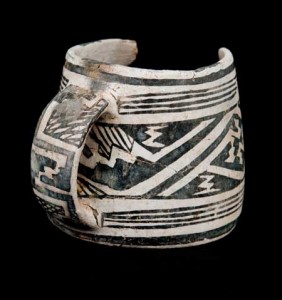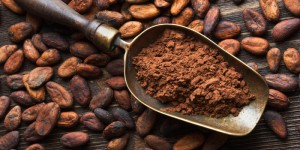Imagine going to your local Starbucks and ordering a coffee. Once you’re done with your coffee, you throw out the cup in the garbage can outside of the Starbucks or at your office. What will happen to that cup 500 years in the future, or even 1,000 years? What if it is in a landfill, still trying to decompose, and a garbologist from another civilization is performing an archeological search and they find this? Well, when they examine the contents, they will find traces of cacao. This is where context matters. Taking a look at our location, they will come to the conclusion that we did not have the adequate environment to grow cocoa beans in our backyards or at any facilities nearby, and the closest place with optimum conditions would be Hawaii, nearly 5,000 miles away. What can they deduce from this? Well, from the sheer volume of cups and mugs with cacao traces, they will deduce that our civilization was highly advanced because it had a complex trading system with other locations and carried items across vast distances very efficiently.
A recent a study has found traces of cacao, across the prehistoric Southwest, in ceramic cups. And context here, too, is important. The study looked at a region spanning from Colorado to Chihuahua. This region, too, did not have suitable conditions to grow cocoa beans for caffeinated drinks. The study looked at 177 pottery samples, with 40 of them, or 22%, containing traces of cacao. While 22% does not seem high to us now, it was surely significant back then because it meant that they had a steady supply and traded with people from other regions, much like us now. Additionally, the study found that there were traces of other plants in these pottery samples that had high amounts of caffeine, which means that they were well-aware of the beneficial effects that caffeine has on the brain (or at the very least, the person). And, as the author of the article puts it,
“It was a striking reminder of the great economic reach of the Ancestral Puebloans, whose sites had already turned up other Mesoamerican items, like copper bells and remains of scarlet macaws.” (De Pastino)
The juxtaposition of the modern day person and a person from the prehistoric Southwest shows that there are a vast number of similarities between civilizations, despite a large difference in the times that these civilizations emerged and became prominent. One can only speculate as to what cacao was really used for in the past, for it is difficult to get into the mind of our ancestors. However, it is entirely possible for it to be for the same reason as us: a medicine for fatigue or waking oneself (which they may have taken to be spiritually). Needless to say, we still resorted to the same resolution to our problem, which in itself is amazing to think of. Perhaps a civilization from the future will come to the same resolution and drink coffee as they study their ancestors, who were drinking coffee while studying their ancestors.
——————————————————————————————————————–
References
De Pastino, Blake. “Cocoa, Caffeinated ‘Black Drink’ Were Widespread in Pre-Contact Southwest, Study Finds.” Western Digs (2015): n. pag. Web. 9 Sept. 2015. .
Cacao-pic. Digital image. N.p., n.d. Web. .



The incredible power of artifacts is that although they are just a glimpse into the past with correct context and interpretation, archaeologists can find its connection and value to the larger history. Studies such as this one point to the existence of a system of trade and travel among our ancestors dating back thousands of years ago. It is no surprise that modern civilizations still share similarities to ancient ones, despite the advancement of technology and development of social organization. When future archaeologists study our current culture and society, what will our material culture tell them about us?
Seeing how similar past cultures were to present ones shows us that some things are more universal than we like to believe. When life gets stressful it is easy to fantasize about a past time when things were easier. But did that ever exist? Farming the desert was not an easy thing for the Ancestral Pueblo. They had planting and harvesting deadlines and requests from neighboring groups to trade or share resources that had to be considered. There were internal and external disagreements. There was a need for stimulants like coffee. Studying the past tells us about the present. Life is a lot of work and, for some, coffee makes it easier to get that work done. Generations of people agree.
Hey,
Since my post was mainly about the prehistoric Southwest, I wanted to go ahead and learn more about coffee’s history. As you mentioned, there are certain things that seem to be universal and coffee is certainly one of them. I came across this interesting article. Albeit it is older (dated 2009, whereas my post is from an article in 2015), there are certain interesting points the article makes. One, it mentions that “priests used it to stay alert during their long nights of studying for the church” and two, “It wasn’t until the 18th century that coffee was introduced to the America’s”. The former statement indicates that even in the past, it was used as an agent to aid in studying and the latter point is incorrect – as my post indicates – it was in use in the Southwestern region of the Americas. Although, it shows that even six years ago, we had a colonial perception of the past.
Here is the link for the article:
http://www.ancientdigger.com/2009/07/history-of-coffee.html